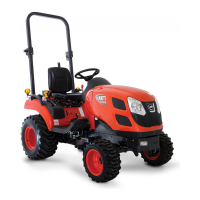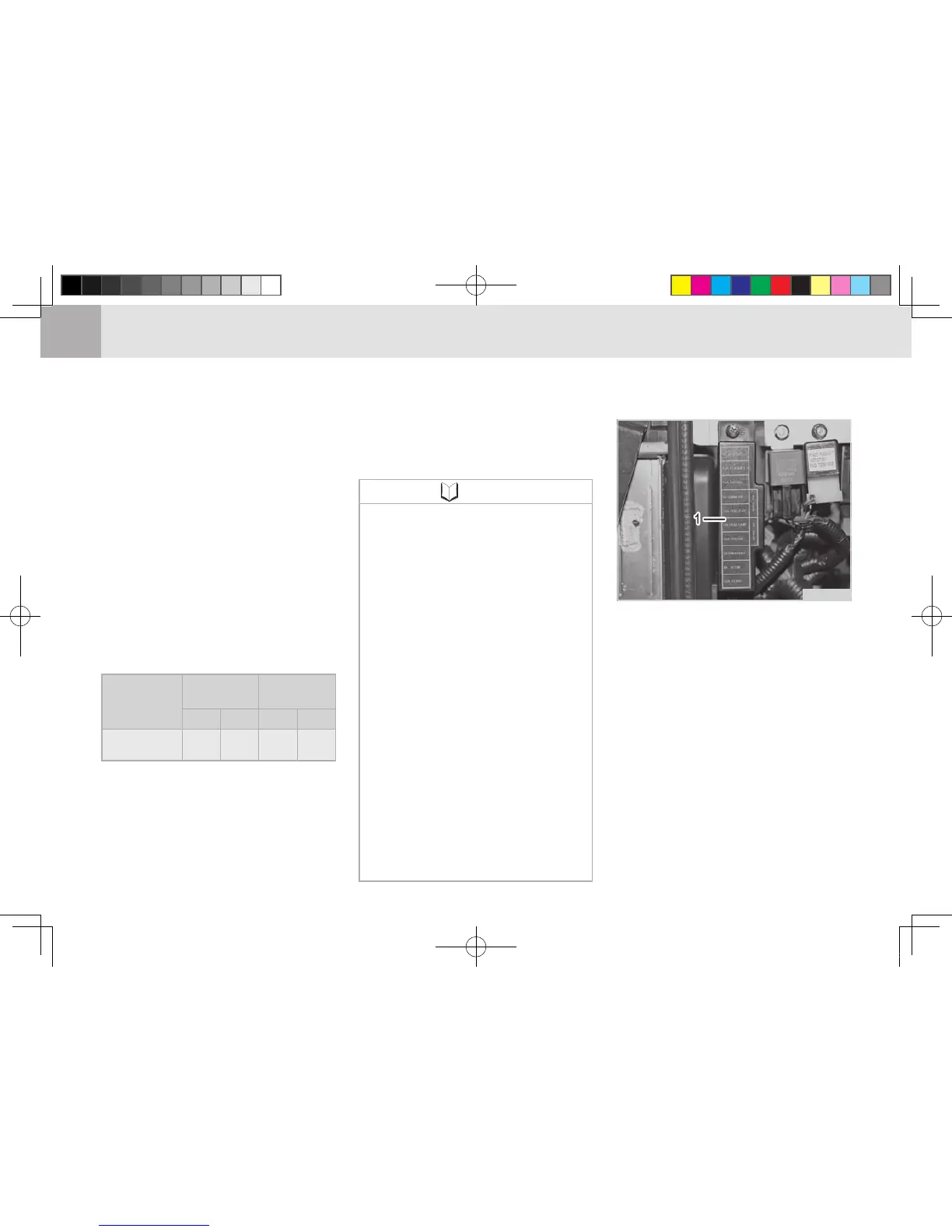ANTI-FREEZE
* At 760 mmHg pressure (atmospher-
ic). A higher boiling point is obtained
by using a radiator pressure cap.
This tractor is lled with 50% of eth-
ylene glycol at factory.
If the anti-freeze has been replaced
by tap water later on, the coolant can
be frozen, leading to damage to the
cylinder and radiator when the ambi-
ent temperature is below 0
℃.
Therefore, make sure to change
water into anti-freeze before winter
season comes.
When changing the anti-freeze with
one of another type, ush the cooling
system several times and contact a
professional for the mixture ratio.
Vol. %
Anti-freeze
Freezing
Point
Boiling
Point*
°F
°C °F °C
40
50
-12
-34
-24
-37
222
226
106
108
The temperatures shown on the
left are industry standards that
necessitate a minimum glycol
content in the concentrated anti-
freeze.
When the coolant level drops
due to evaporation, add water
only. In case of leakage, add an-
ti-freeze and water in the speci-
ed mixing ratio.
Anti-freeze absorbs moisture.
Keep unused anti-freeze in a
tightly sealed container.
Do not use radiator cleaning
agents when anti-freeze has
been added to the cooling water.
(Anti-freeze contains an anti-
corrosive agent, which will react
with the radiator cleaning agent
forming sludge which will affect
the engine parts)
NOTE
Fuses protect the tractor electrical
system from potential damage. A
blown fuse indicates that there is an
overload or short somewhere in the
electrical system.
(1) Fuse Box
M46O735A
REPLACING FUSE (AN)

